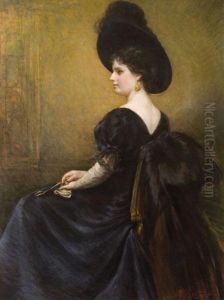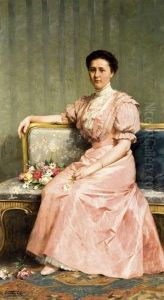Gyorgy Ii Vastagh Paintings
György (George) II Vastagh was a Hungarian painter, primarily known for his animal paintings and his role in the Nagybánya artists' colony, which was crucial in the development of Hungarian art at the turn of the 20th century.
Vastagh was born on October 30, 1868, in Pest (now part of Budapest), Hungary, into an artistic family. His father, György Vastagh I, was also a painter, specializing in animal and genre scenes. This early exposure to art and his father's guidance had a significant influence on Vastagh's career choice and style.
Though Vastagh's early education is not well-documented, it is known that he studied at the Hungarian University of Fine Arts in Budapest. He continued his studies abroad, which was common for Hungarian artists at the time, to further his education and exposure to different artistic styles and techniques. Vastagh traveled to and worked in several European art centers, including Munich, which was a hub for artists from Eastern Europe.
Upon his return to Hungary, Vastagh became associated with the Nagybánya artists' colony, also known as the Baia Mare School in present-day Romania. The colony was founded in 1896 by Simon Hollósy and became a center for artistic innovation, focusing on plein air painting and naturalism, significantly influencing Hungarian art.
Vastagh's own work was characterized by a strong realist approach, especially in his portrayals of animals. He was particularly adept at capturing the essence and vitality of his subjects, whether they were domestic animals or wildlife. His paintings often depict the animals within a natural setting, showcasing his ability to render both the creatures and their environments with a high degree of realism.
During his career, Vastagh exhibited his work widely. He participated in exhibitions in Hungary and internationally, building a reputation as a leading animal painter of his time. Vastagh's paintings were well-received by both critics and the public, and he was awarded several accolades for his contributions to Hungarian art.
Despite his success, Vastagh's life was cut short by the Spanish flu pandemic. He died in 1919, leaving behind a significant body of work that continues to be appreciated for its contribution to Hungarian naturalism and animal painting. His legacy is also preserved through his influence on other artists and his role in the Nagybánya artists' colony, which played a pivotal role in shaping modern Hungarian art.

